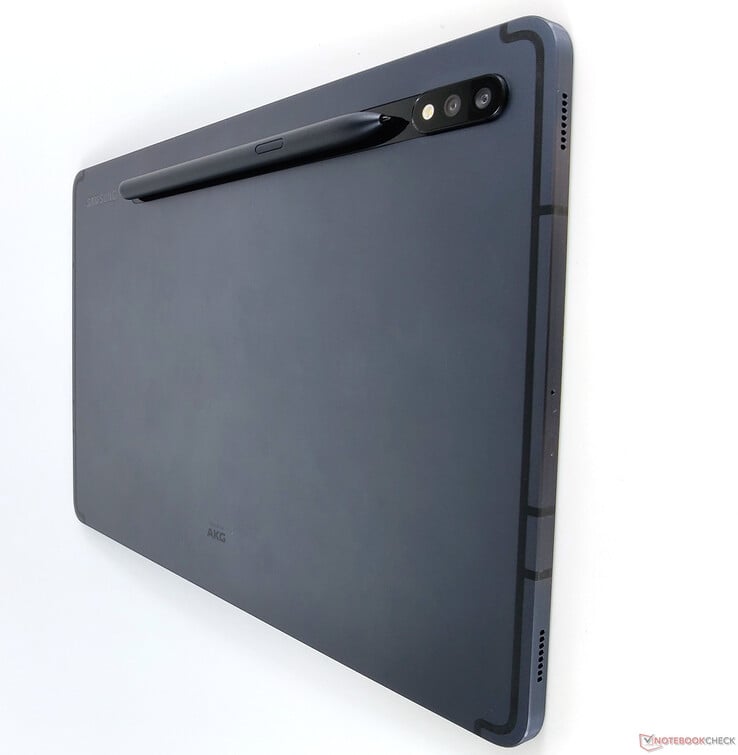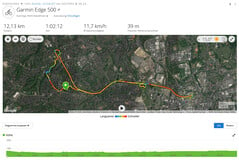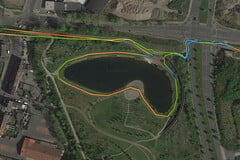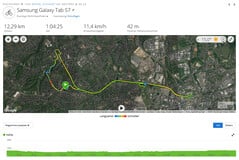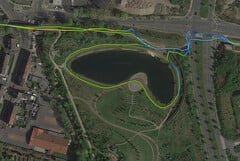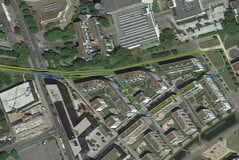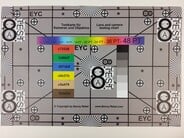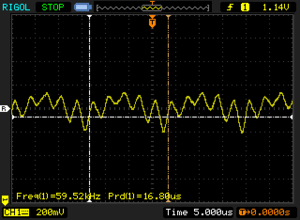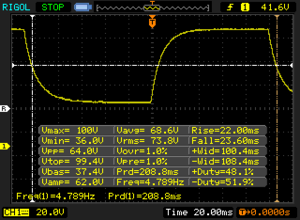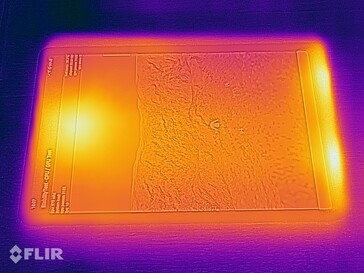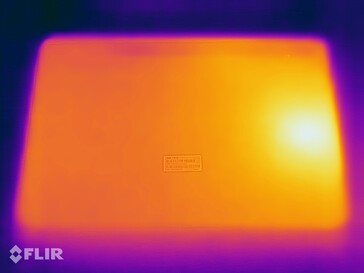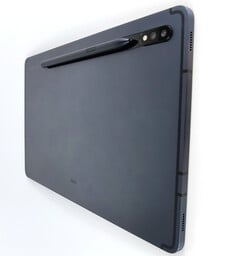Breve Análise do tablet Samsung Galaxy Tab S7 - Sem dúvida, o melhor tablet Android de 11 polegadas
Avaliação | Data | Modelo | Peso | Altura | Size | Resolução | Preço |
|---|---|---|---|---|---|---|---|
| 90.1 % v7 (old) | 10/2020 | Samsung Galaxy Tab S7 SD 865+ (Plus), Adreno 650 | 500 g | 6.3 mm | 11.00" | 2560x1600 | |
| 90.4 % v7 (old) | 04/2020 | Apple iPad Pro 11 2020 A12Z Bionic, A12Z Bionic GPU | 471 g | 5.9 mm | 11.00" | 2388x1668 | |
| 88.4 % v7 (old) | 08/2020 | Huawei MatePad Pro 10.8 Kirin 990, Mali-G76 MP16 | 460 g | 7.2 mm | 10.80" | 2560x1600 | |
| 88.1 % v7 (old) | 10/2020 | Samsung Galaxy Tab S7 Plus SD 865+ (Plus), Adreno 650 | 575 g | 5.7 mm | 12.40" | 2800x1752 |
Os Top 10
» Os Top 10 Portáteis Multimídia
» Os Top 10 Portáteis de Jogos
» Os Top 10 Portáteis Leves para Jogos
» Os Top 10 Portáteis Acessíveis de Escritório/Empresariais
» Os Top 10 Portáteis Premium de Escritório/Empresariais
» Os Top 10 dos Portáteis Workstation
» Os Top 10 Subportáteis
» Os Top 10 Ultrabooks
» Os Top 10 Conversíveis
» Os Top 10 Tablets
» Os Top 10 Smartphones
» A melhores Telas de Portáteis Analisadas Pela Notebookcheck
» Top 10 dos portáteis abaixo dos 500 Euros da Notebookcheck
» Top 10 dos Portáteis abaixo dos 300 Euros
| Networking | |
| iperf3 transmit AX12 | |
| Huawei MatePad Pro 10.8 | |
| Apple iPad Pro 11 2020 | |
| Samsung Galaxy Tab S7 | |
| Samsung Galaxy Tab S7 Plus | |
| iperf3 receive AX12 | |
| Huawei MatePad Pro 10.8 | |
| Samsung Galaxy Tab S7 | |
| Samsung Galaxy Tab S7 Plus | |
| Apple iPad Pro 11 2020 | |
Comparação de imagens
Escolha uma cena e navegue pela primeira imagem. Um clique muda a posição nas telas sensíveis ao toque. Um clique na imagem ampliada abre o original em uma nova janela. A primeira imagem mostra a fotografia em escala do dispositivo de teste.
Wide-angle lensWide-angle lens5X zoomLow-light photographyUltra wide-angle lens

| |||||||||||||||||||||||||
iluminação: 91 %
iluminação com acumulador: 554 cd/m²
Contraste: 1679:1 (Preto: 0.33 cd/m²)
ΔE Color 2.1 | 0.5-29.43 Ø4.87
ΔE Greyscale 1.6 | 0.5-98 Ø5.1
97% sRGB (Calman 2D)
Gamma: 2.32
| Samsung Galaxy Tab S7 LTPS, 2560x1600, 11" | Apple iPad Pro 11 2020 IPS, 2388x1668, 11" | Huawei MatePad Pro 10.8 IPS, 2560x1600, 10.8" | Samsung Galaxy Tab S7 Plus Super AMOLED, 2800x1752, 12.4" | |
|---|---|---|---|---|
| Screen | 18% | -20% | -14% | |
| Brightness middle | 554 | 617 11% | 606 9% | 441 -20% |
| Brightness | 535 | 585 9% | 579 8% | 447 -16% |
| Brightness Distribution | 91 | 84 -8% | 89 -2% | 98 8% |
| Black Level * | 0.33 | 0.36 -9% | 0.32 3% | |
| Contrast | 1679 | 1714 2% | 1894 13% | |
| Colorchecker dE 2000 * | 2.1 | 0.94 55% | 2.9 -38% | 2.4 -14% |
| Colorchecker dE 2000 max. * | 7.1 | 1.87 74% | 6 15% | 4.1 42% |
| Greyscale dE 2000 * | 1.6 | 1.4 12% | 4.3 -169% | 2.9 -81% |
| Gamma | 2.32 95% | 2.156 102% | 2.22 99% | 2.01 109% |
| CCT | 6623 98% | 6733 97% | 7272 89% | 6469 100% |
* ... menor é melhor
Cintilação da tela / PWM (modulação por largura de pulso)
| Tela tremeluzindo/PWM detectado | 59520 Hz | ≤ 21 % configuração de brilho | |
A luz de fundo da tela pisca em 59520 Hz (pior caso, por exemplo, utilizando PWM) Cintilação detectada em uma configuração de brilho de 21 % e abaixo. Não deve haver cintilação ou PWM acima desta configuração de brilho. A frequência de 59520 Hz é bastante alta, então a maioria dos usuários sensíveis ao PWM não deve notar nenhuma oscilação. [pwm_comparison] Em comparação: 53 % de todos os dispositivos testados não usam PWM para escurecer a tela. Se PWM foi detectado, uma média de 8516 (mínimo: 5 - máximo: 343500) Hz foi medida. | |||
Exibir tempos de resposta
| ↔ Tempo de resposta preto para branco | ||
|---|---|---|
| 20.8 ms ... ascensão ↗ e queda ↘ combinadas | ↗ 6.8 ms ascensão | |
| ↘ 14 ms queda | ||
| A tela mostra boas taxas de resposta em nossos testes, mas pode ser muito lenta para jogadores competitivos. Em comparação, todos os dispositivos testados variam de 0.1 (mínimo) a 240 (máximo) ms. » 43 % de todos os dispositivos são melhores. Isso significa que o tempo de resposta medido é semelhante à média de todos os dispositivos testados (20.8 ms). | ||
| ↔ Tempo de resposta 50% cinza a 80% cinza | ||
| 45.6 ms ... ascensão ↗ e queda ↘ combinadas | ↗ 22 ms ascensão | |
| ↘ 23.6 ms queda | ||
| A tela mostra taxas de resposta lentas em nossos testes e será insatisfatória para os jogadores. Em comparação, todos os dispositivos testados variam de 0.165 (mínimo) a 636 (máximo) ms. » 76 % de todos os dispositivos são melhores. Isso significa que o tempo de resposta medido é pior que a média de todos os dispositivos testados (32.5 ms). | ||
| PCMark for Android | |
| Work performance score | |
| Média Qualcomm Snapdragon 865+ (Plus) (13629 - 19824, n=5) | |
| Samsung Galaxy Tab S7 | |
| Samsung Galaxy Tab S7 Plus | |
| Xiaomi Mi 10 Pro | |
| Huawei MatePad Pro 10.8 | |
| Work 2.0 performance score | |
| Média Qualcomm Snapdragon 865+ (Plus) (12355 - 14979, n=6) | |
| Samsung Galaxy Tab S7 | |
| Samsung Galaxy Tab S7 Plus | |
| Xiaomi Mi 10 Pro | |
| Huawei MatePad Pro 10.8 | |
| GFXBench 3.1 | |
| on screen Manhattan ES 3.1 Onscreen | |
| Xiaomi Mi 10 Pro | |
| Média Qualcomm Snapdragon 865+ (Plus) (41 - 82, n=5) | |
| Samsung Galaxy Tab S7 | |
| Média da turma Tablet (4.8 - 120, n=68, últimos 2 anos) | |
| Samsung Galaxy Tab S7 Plus | |
| Huawei MatePad Pro 10.8 | |
| 1920x1080 Manhattan ES 3.1 Offscreen | |
| Média da turma Tablet (5 - 400, n=68, últimos 2 anos) | |
| Samsung Galaxy Tab S7 | |
| Média Qualcomm Snapdragon 865+ (Plus) (75 - 93, n=5) | |
| Samsung Galaxy Tab S7 Plus | |
| Xiaomi Mi 10 Pro | |
| Huawei MatePad Pro 10.8 | |
| AnTuTu v8 - Total Score | |
| Apple iPad Pro 11 2020 | |
| Xiaomi Mi 10 Pro | |
| Samsung Galaxy Tab S7 | |
| Média Qualcomm Snapdragon 865+ (Plus) (490260 - 622888, n=4) | |
| Samsung Galaxy Tab S7 Plus | |
| Huawei MatePad Pro 10.8 | |
| Jetstream 2 - 2.0 Total Score | |
| Apple iPad Pro 11 2020 (Safari 14.1) | |
| Apple iPad Pro 11 2020 (Chrome 80) | |
| Média da turma Tablet (19.9 - 393, n=70, últimos 2 anos) | |
| Samsung Galaxy Tab S7 Plus (Samsung Browser 12.1) | |
| Média Qualcomm Snapdragon 865+ (Plus) (69.8 - 75.5, n=4) | |
| Samsung Galaxy Tab S7 (Chrome86) | |
| Huawei MatePad Pro 10.8 (Huawei Browser V10.1.2) | |
| JetStream 1.1 - Total Score | |
| Apple iPad Pro 11 2020 (Chrome 80) | |
| Samsung Galaxy Tab S7 Plus (Samsung Browser 12.1) | |
| Samsung Galaxy Tab S7 (Chrome86) | |
| Média Qualcomm Snapdragon 865+ (Plus) (121.7 - 131.5, n=4) | |
| Huawei MatePad Pro 10.8 (Huawei Browser V10.1.2) | |
| WebXPRT 3 - Overall | |
| Apple iPad Pro 11 2020 (Safari 14.1) | |
| Apple iPad Pro 11 2020 (Chrome 80) | |
| Média da turma Tablet (36 - 435, n=40, últimos 2 anos) | |
| Samsung Galaxy Tab S7 Plus (Samsung Browser 12.1) | |
| Média Qualcomm Snapdragon 865+ (Plus) (114 - 126, n=4) | |
| Samsung Galaxy Tab S7 (Chrome86) | |
| Huawei MatePad Pro 10.8 (Huawei Browser V10.1.2) | |
| Speedometer 2.0 - Result | |
| Apple iPad Pro 11 2020 (Safari 14.1) | |
| Média da turma Tablet (2.59 - 572, n=64, últimos 2 anos) | |
| Samsung Galaxy Tab S7 Plus (Samsung Browser 12.1) | |
| Samsung Galaxy Tab S7 (Chrome86) | |
| Média Qualcomm Snapdragon 865+ (Plus) (41.2 - 73.3, n=4) | |
| Huawei MatePad Pro 10.8 (Huawei Browser V10.1.2) | |
| Octane V2 - Total Score | |
| Apple iPad Pro 11 2020 (Safari 14.1) | |
| Apple iPad Pro 11 2020 (Chrome 80) | |
| Média da turma Tablet (763 - 111219, n=91, últimos 2 anos) | |
| Samsung Galaxy Tab S7 Plus (Samsung Browser 12.1) | |
| Média Qualcomm Snapdragon 865+ (Plus) (25953 - 27360, n=4) | |
| Samsung Galaxy Tab S7 (Chrome86) | |
| Huawei MatePad Pro 10.8 (Huawei Browser V10.1.2) | |
| Mozilla Kraken 1.1 - Total | |
| Média da turma Tablet (319 - 34733, n=77, últimos 2 anos) | |
| Huawei MatePad Pro 10.8 (Huawei Browser V10.1.2) | |
| Samsung Galaxy Tab S7 Plus (Samsung Browser 12.1) | |
| Média Qualcomm Snapdragon 865+ (Plus) (1854 - 1947, n=4) | |
| Samsung Galaxy Tab S7 (Chrome86) | |
| Apple iPad Pro 11 2020 (Chrome 80) | |
* ... menor é melhor
| Samsung Galaxy Tab S7 | Huawei MatePad Pro 10.8 | Samsung Galaxy Tab S7 Plus | Média 128 GB UFS 3.1 Flash | Média da turma Tablet | |
|---|---|---|---|---|---|
| AndroBench 3-5 | 1% | 4% | 7% | -3% | |
| Sequential Read 256KB | 1512 | 1789 18% | 1675 11% | 1602 ? 6% | 1193 ? -21% |
| Sequential Write 256KB | 680 | 399 -41% | 732 8% | 748 ? 10% | 834 ? 23% |
| Random Read 4KB | 219 | 224.6 3% | 230.1 5% | 243 ? 11% | 200 ? -9% |
| Random Write 4KB | 211.5 | 262.4 24% | 205 -3% | 244 ? 15% | 203 ? -4% |
| Sequential Read 256KB SDCard | 86 ? | 82.4 ? -4% | 85.8 ? 0% | 85.9 ? 0% | |
| Sequential Write 256KB SDCard | 69 ? | 71.7 ? 4% | 69.3 ? 0% | 68.8 ? 0% |
PUBG
Asphalt 9 Legends
(+) A temperatura máxima no lado superior é 33.5 °C / 92 F, em comparação com a média de 33.7 °C / 93 F , variando de 20.7 a 53.2 °C para a classe Tablet.
(+) A parte inferior aquece até um máximo de 29.8 °C / 86 F, em comparação com a média de 33.2 °C / 92 F
(+) Em uso inativo, a temperatura média para o lado superior é 25.8 °C / 78 F, em comparação com a média do dispositivo de 30 °C / ### class_avg_f### F.
Samsung Galaxy Tab S7 análise de áudio
(+) | os alto-falantes podem tocar relativamente alto (###valor### dB)
Graves 100 - 315Hz
(-) | quase nenhum baixo - em média 15% menor que a mediana
(±) | a linearidade dos graves é média (9.6% delta para a frequência anterior)
Médios 400 - 2.000 Hz
(+) | médios equilibrados - apenas 1.6% longe da mediana
(+) | médios são lineares (2.9% delta para frequência anterior)
Altos 2 - 16 kHz
(+) | agudos equilibrados - apenas 1.7% longe da mediana
(+) | os máximos são lineares (4.3% delta da frequência anterior)
Geral 100 - 16.000 Hz
(+) | o som geral é linear (10.4% diferença em relação à mediana)
Comparado com a mesma classe
» 6% de todos os dispositivos testados nesta classe foram melhores, 3% semelhantes, 91% piores
» O melhor teve um delta de 7%, a média foi 21%, o pior foi 129%
Comparado com todos os dispositivos testados
» 4% de todos os dispositivos testados foram melhores, 1% semelhantes, 94% piores
» O melhor teve um delta de 4%, a média foi 24%, o pior foi 134%
Apple iPad Pro 11 2020 análise de áudio
(±) | o volume do alto-falante é médio, mas bom (###valor### dB)
Graves 100 - 315Hz
(±) | graves reduzidos - em média 6.3% menor que a mediana
(±) | a linearidade dos graves é média (7.6% delta para a frequência anterior)
Médios 400 - 2.000 Hz
(±) | médios mais altos - em média 6.4% maior que a mediana
(+) | médios são lineares (6% delta para frequência anterior)
Altos 2 - 16 kHz
(+) | agudos equilibrados - apenas 1.9% longe da mediana
(+) | os máximos são lineares (6.2% delta da frequência anterior)
Geral 100 - 16.000 Hz
(+) | o som geral é linear (13% diferença em relação à mediana)
Comparado com a mesma classe
» 20% de todos os dispositivos testados nesta classe foram melhores, 4% semelhantes, 76% piores
» O melhor teve um delta de 7%, a média foi 21%, o pior foi 129%
Comparado com todos os dispositivos testados
» 11% de todos os dispositivos testados foram melhores, 2% semelhantes, 86% piores
» O melhor teve um delta de 4%, a média foi 24%, o pior foi 134%
| desligado | |
| Ocioso | |
| Carga |
|
Key:
min: | |
| Samsung Galaxy Tab S7 8000 mAh | Apple iPad Pro 11 2020 7538 mAh | Huawei MatePad Pro 10.8 7250 mAh | Samsung Galaxy Tab S7 Plus 10090 mAh | |
|---|---|---|---|---|
| Power Consumption | -25% | -13% | -5% | |
| Idle Minimum * | 1.16 | 1.3 -12% | 1.98 -71% | 2.41 -108% |
| Idle Average * | 4.42 | 3.5 21% | 5.66 -28% | 3.4 23% |
| Idle Maximum * | 4.43 | 5.6 -26% | 5.69 -28% | 3.43 23% |
| Load Average * | 8.86 | 12.5 -41% | 6.96 21% | 6.63 25% |
| Load Maximum * | 11.6 | 19.2 -66% | 6.98 40% | 10.29 11% |
* ... menor é melhor
| Samsung Galaxy Tab S7 8000 mAh | Apple iPad Pro 11 2020 7538 mAh | Huawei MatePad Pro 10.8 7250 mAh | Samsung Galaxy Tab S7 Plus 10090 mAh | |
|---|---|---|---|---|
| Duração da bateria | 2% | 4% | -18% | |
| Reader / Idle | 1963 | 2001 2% | 1877 -4% | 898 -54% |
| H.264 | 885 | 936 6% | 909 3% | 620 -30% |
| WiFi v1.3 | 811 | 902 11% | 891 10% | 425 -48% |
| Load | 221 | 197 -11% | 233 5% | 355 61% |
Pro
Contra
Veredicto do Galaxy Tab S7: A Samsung acertou muito, mas nem em tudo
O Samsung Galaxy Tab S7 é um tablet Android atraente que é capaz de dar ao resto da concorrência de ponta, mas ainda um tanto econômica, uma corrida pelo seu dinheiro. Na verdade, o único concorrente real no espaço do Android é o Huawei MatePad Pro, que tem alguns pontos fracos que o Tab S7 não tem. O dispositivo da Samsung tem um sensor de digitais, um painel de 120 Hz e nenhum orifício para câmera, o que escurece a parte da tela ao redor. Além disso, o Tab S7 é compatível com o Google Play Services e o Huawei não.
Além dos ótimos alto-falantes, armazenamento UFS rápido e o poderoso SoC da Qualcomm, também gostamos da S Pen incluída e da funcionalidade que ela oferece. A qualidade de construção está em um nível muito bom. No entanto, as superfícies mate não oferecem muita aderência.
O Galaxy Tab S7 é um excelente tablet Android, que não foi tratado tão bem como merece.
Em suma, o tablet premium se abre para mais críticas do que os smartphones Galaxy S20. Por exemplo, ele não possui recursos premium como certificação IP, chip NFC ou carregamento sem fio. O fato de a carcaça não incluir o carregador rápido de 45 W é difícil de entender por causa do alto preço recomendado do dispositivo. Também é difícil entender por que o Tab S7 tem apenas 6 GB de RAM quando havia uma versão de 8 GB do Tab S6 e o Note 20 Ultra inclusive vem com até 16 GB de RAM. O fato de a versão celular do Tab S7 vir apenas com um modem 4G também é um tanto intrigante.
Samsung Galaxy Tab S7
- 10/15/2020 v7 (old)
Marcus Herbrich




